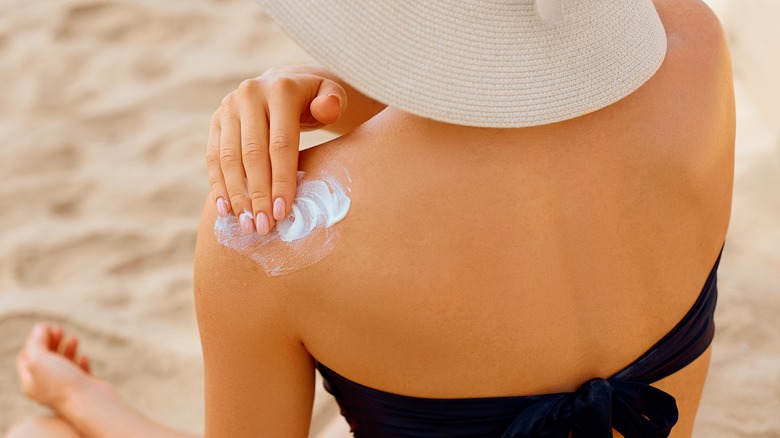What Is The UV Index And How Can It Help You Stay Safe In The Sun?
Before we head out for the day, we'll check our weather app to see how hot it's going to be. Typically, you'll see the predicted temperature, the humidity, and maybe the chance for rain. You'll also see the UV index, which tells you the power of the sun's ultraviolet rays.
According to the World Health Organization, ultraviolet radiation mostly comes from the sun and has three bands of wavelengths — UVA, UVB, and UVC. UVC and most UVB radiation don't reach us because they're soaked up by the Earth's atmosphere. We see variations of UV radiation around the Earth depending on the amount of cloud cover, the thickness of the ozone layer, and the position of the sun. Where you live will also see differences in UV radiation.
Forecasters use mathematical models, cloud cover predictions, and ozone projections to determine the UV index each day for areas all over the country, according to the National Weather Service's Climate Prediction Center. The UV index can range from 0, which is no sunlight, to the mid-teens. The Environmental Protection Agency (EPA) suggests taking protective measures from the sun if the UV index is above 3. If the index is 8 or higher, you'll need extra protection from the sun; otherwise, you are at high risk of sun damage. In fact, when the UV index is high, it is best to minimize sun exposure if possible.
Protecting yourself from harmful UV rays
The sun is strongest between 10 a.m. and 4 p.m. during daylight savings time. The EPA suggests taking the shadow test. If your shadow is shorter than you, you know you should seek shade. UV rays can pass through clouds and bounce off water, cement, sand, and snow, so you're not always protected in the winter, according to the Centers for Disease Control and Prevention (CDC).
If the UV index is 3 or higher, seek shade. Your clothes can also help protect you from the sun. According to the Skin Cancer Foundation, choose dark or bright colors, and densely woven fabrics such as denim, canvas, or synthetic fibers. Unbleached cotton and shiny polyesters and silks can protect your skin. When possible, wear long sleeves and long skirts or pants, as they offer more UV protection.
The CDC suggests a wide-brimmed hat to protect your head, neck, and ears. Look for sunglasses that offer UVA and UVB protection and cover most of the area around your eye. Generous applications of broad-spectrum sunscreen of SPF 15 or higher can protect any skin exposed to the sun. After two hours of sun exposure, you'll need to reapply. Sunscreens can lose their effectiveness over time, so toss out sunscreen that's been in your bag for three years if it doesn't have an expiration date. If it's been in your hot car, you'll need to toss it sooner.


